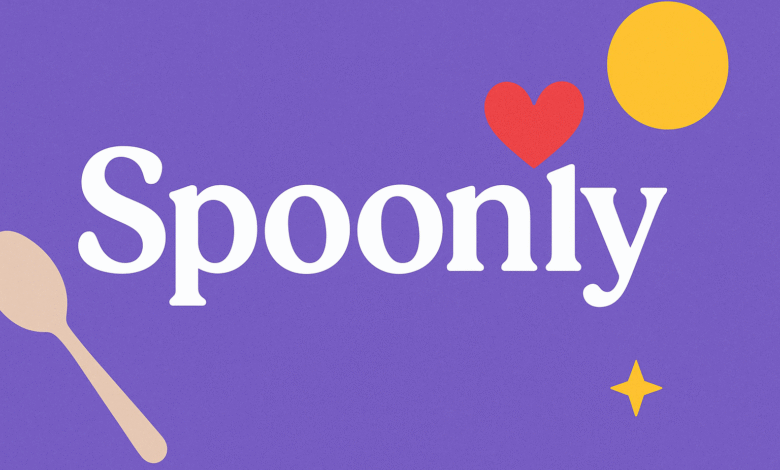Spoonly: The Complete Guide to Its Meaning, Uses, and Growing Popularity

In the modern digital age, words evolve rapidly, often gaining popularity through social platforms, branding, and cultural trends. One such term that has caught global attention is Spoonly. While it might sound quirky or even invented, Spoonly has become a part of contemporary vocabulary, reflecting comfort, creativity, and connection. This detailed guide explores the meaning, origins, and diverse applications of Spoonly in today’s world, along with insights into why it resonates so strongly with modern audiences.
Introduction to Spoonly
The term Spoonly has emerged as a fascinating example of how language adapts and grows in digital spaces. It is not just a random slang term—it’s a concept with cultural depth and emotional value. Whether it’s used to describe cozy experiences, creative projects, or innovative brands, Spoonly has made its way into everyday language. Its growing use across industries and communities demonstrates how a simple, memorable word can become a meaningful symbol of modern culture.
What Does Spoonly Mean?
Unlike traditional words with fixed meanings, Spoonly is fluid and adaptable. Its interpretation largely depends on the context in which it appears. For many, Spoonly represents warmth, closeness, and affection—much like the comforting act of “spooning.” For others, it embodies creativity, uniqueness, and a sense of belonging.
This flexibility is what makes Spoonly so powerful. It can refer to a mood, a lifestyle, or even a brand identity. The term captures the essence of coziness while staying modern and relevant. As a result, Spoonly has become a word that connects with people emotionally and intellectually.
The Origins of Spoonly
The origins of Spoonly can be traced back to internet culture, where playful and expressive language often flourishes. It likely began as a fun, affectionate term used to describe warmth or comfort but soon evolved beyond its casual roots.
As online communities embraced it, Spoonly gained new dimensions. Entrepreneurs, artists, and influencers started adopting the term for branding and creative expression. The word’s sound—soft, friendly, and inviting—makes it ideal for modern naming and marketing. Over time, Spoonly has transitioned from digital slang to a recognized cultural expression symbolizing positivity and connection.
Spoonly in Everyday Use
Spoonly has become more than just a word—it’s an expression that fits various aspects of daily life. Some of its key uses include:
-
Lifestyle Expression: People use Spoonly to describe cozy, heartfelt, and affectionate moments that make life feel warm and meaningful.
-
Branding and Business: Startups and creators are adopting Spoonly as a brand name because it sounds trendy, memorable, and comforting.
-
Social Media Language: Spoonly has gone viral on several platforms, often appearing in captions, hashtags, and digital art.
Its widespread adaptability allows Spoonly to represent everything from an aesthetic to a lifestyle trend, making it a versatile word in today’s culture.
Why Spoonly Appeals to Modern Culture
One reason Spoonly resonates so deeply is that it reflects modern emotional needs and digital aesthetics. In a world filled with stress and fast-paced routines, Spoonly offers a sense of calm and warmth. Its appeal can be understood through several key aspects:
-
Emotional Connection: The term evokes feelings of comfort, love, and familiarity.
-
Simplicity: Spoonly is short, easy to pronounce, and easy to remember.
-
Flexibility: It fits into multiple niches—lifestyle, wellness, branding, and online identity.
-
Trend Value: As a catchy, shareable word, Spoonly spreads quickly across social media platforms.
This combination of emotional and practical value makes Spoonly a timeless concept in the digital era.
Spoonly in Business and Branding
The rise of Spoonly in business circles is another indicator of its growing influence. Many modern companies are drawn to names that sound comforting and positive, and Spoonly perfectly fits that need.
Brands using Spoonly as part of their identity often aim to create a friendly and engaging image. The term suggests warmth, creativity, and customer connection—all qualities that enhance brand loyalty. Whether it’s a café, wellness product, or lifestyle startup, Spoonly conveys authenticity and emotional appeal.
Businesses today understand that emotional resonance is key to consumer behavior, and Spoonly’s comforting undertone makes it an ideal brand choice.
Spoonly in Online Communities
Digital culture has been instrumental in spreading Spoonly. Online communities, forums, and social media users have embraced it as a fun and versatile term. Through memes, posts, and creative trends, Spoonly continues to evolve in meaning.
Users associate Spoonly with aesthetics of comfort, self-expression, and positivity. As more people engage with it online, the word gains new interpretations—ranging from a mood descriptor to a brand identity.
This digital adoption not only increases Spoonly’s popularity but also reinforces its status as a cultural phenomenon born from internet creativity.
The Psychological Appeal of Spoonly
The success of Spoonly lies in its ability to evoke positive emotions. Words have power, and Spoonly triggers associations that people naturally find comforting and enjoyable.
It conveys:
-
Comfort: A cozy, heartwarming feeling that brings people closer.
-
Playfulness: A sense of fun and creativity.
-
Uniqueness: A distinctive and modern tone that stands out.
Because of these emotional cues, Spoonly stays in people’s minds, making it both meaningful and marketable. Its sound and feeling perfectly align with the current era’s desire for positivity and individuality.
Spoonly in Pop Culture
From music to lifestyle brands, Spoonly is gradually finding its place in pop culture. Artists and influencers are beginning to use the term to define aesthetics or to brand their creative projects. Its flexibility means it could easily appear in songs, digital campaigns, or even entertainment titles in the near future.
As pop culture thrives on trends that connect emotionally with audiences, Spoonly’s warmth and modern vibe make it a strong contender for long-term cultural relevance.
The Future of Spoonly
The future of Spoonly looks bright as it continues to expand across industries and communities. Here are a few likely directions for its growth:
-
Brand Expansion: More businesses will likely adopt Spoonly-inspired names or products.
-
Lifestyle Movement: It could become associated with coziness, mindfulness, and personal well-being.
-
Digital Identity: Spoonly may represent online aesthetics or creative digital spaces in the years ahead.
As the world continues to embrace hybrid living—combining comfort, creativity, and connection—Spoonly stands out as a symbol of modern harmony.
Final Thoughts
In essence, Spoonly represents the blending of emotion, creativity, and digital expression. Its ability to adapt across contexts makes it much more than a passing trend. From lifestyle use to business branding, Spoonly reflects how language and culture continue to evolve together.
The rise of Spoonly shows how a simple word can embody the spirit of an era—warm, connected, and endlessly creative. As more people discover and use it, Spoonly’s cultural footprint will only continue to grow.
FAQs About Spoonly
Q1. What is Spoonly?
Spoonly is a modern term used to describe comfort, connection, or creativity. It’s also used as a name in branding and digital culture.
Q2. Where did Spoonly originate?
Spoonly originated online, gaining popularity through social media and internet communities where playful and emotional terms often go viral.
Q3. How is Spoonly used in business?
Many brands use Spoonly as a product or company name to convey friendliness, comfort, and originality.
Q4. Why is Spoonly popular among younger audiences?
Younger audiences love Spoonly because it feels fresh, cozy, and expressive—a reflection of modern emotional and social trends.
Q5. What does the future hold for Spoonly?
Spoonly’s future is bright. It’s expected to grow as a brand name, lifestyle term, and digital identity symbol across various industries.


